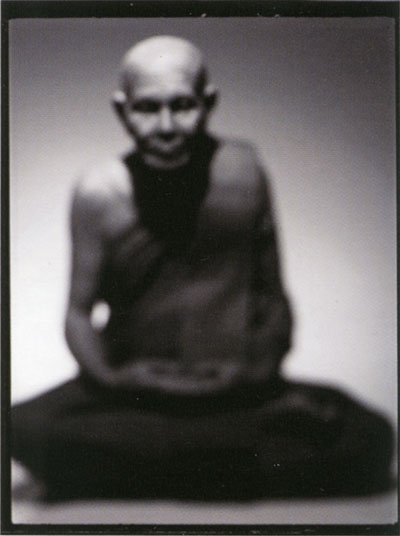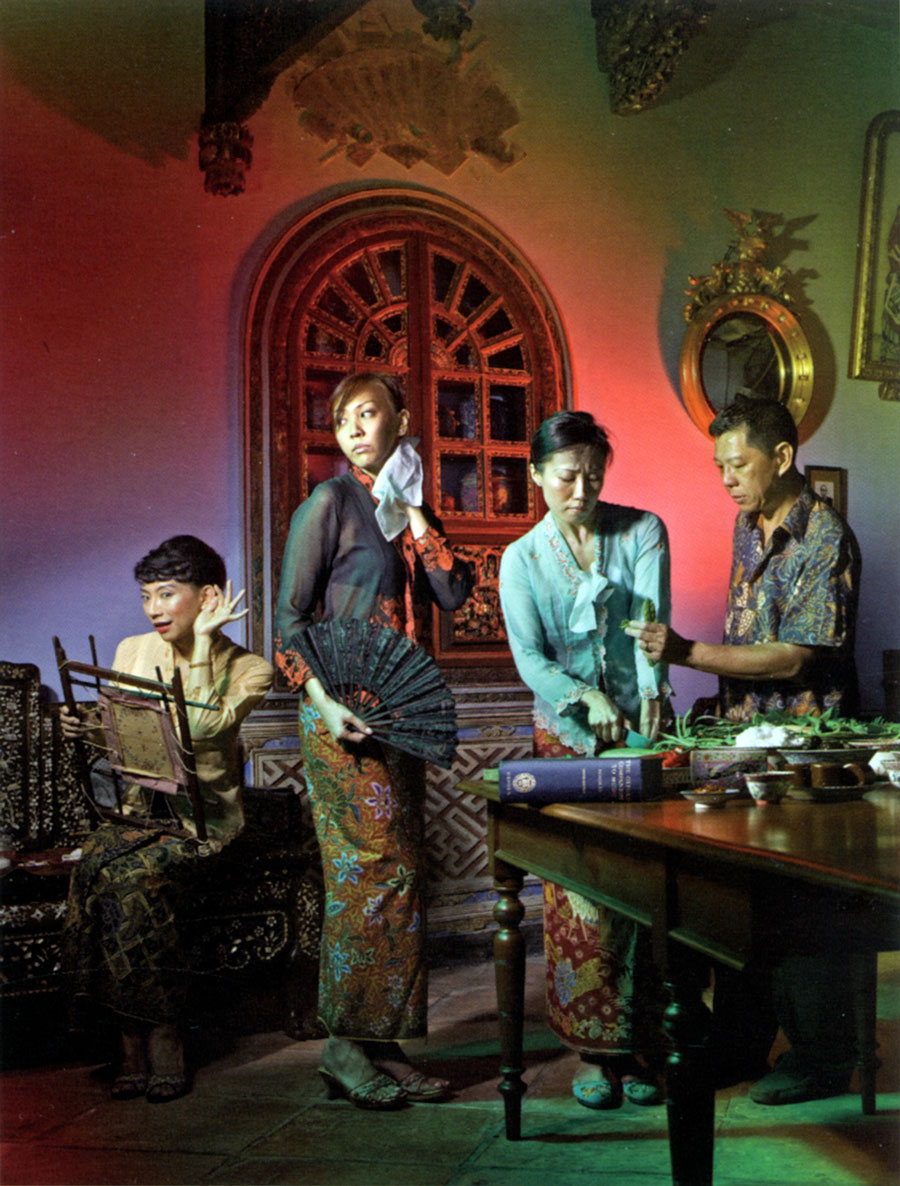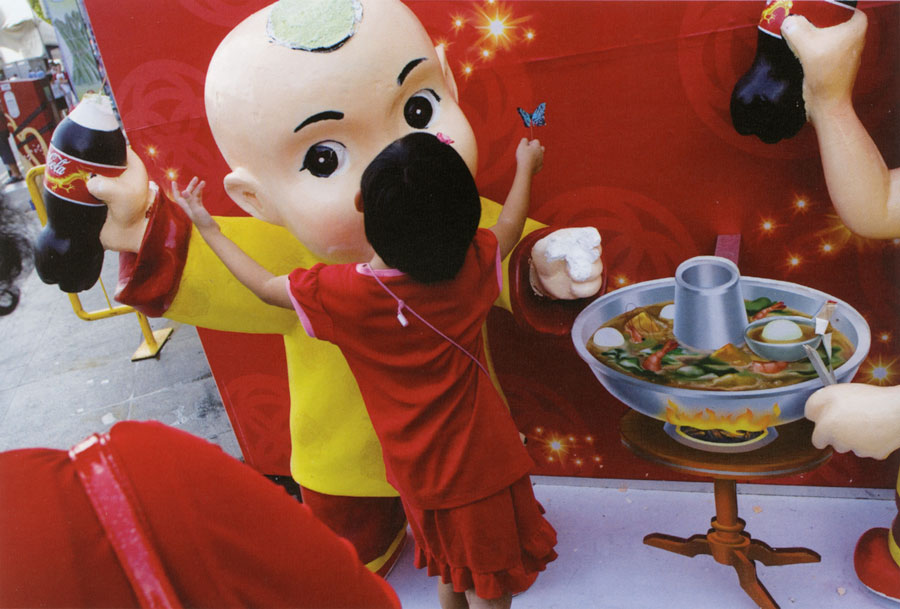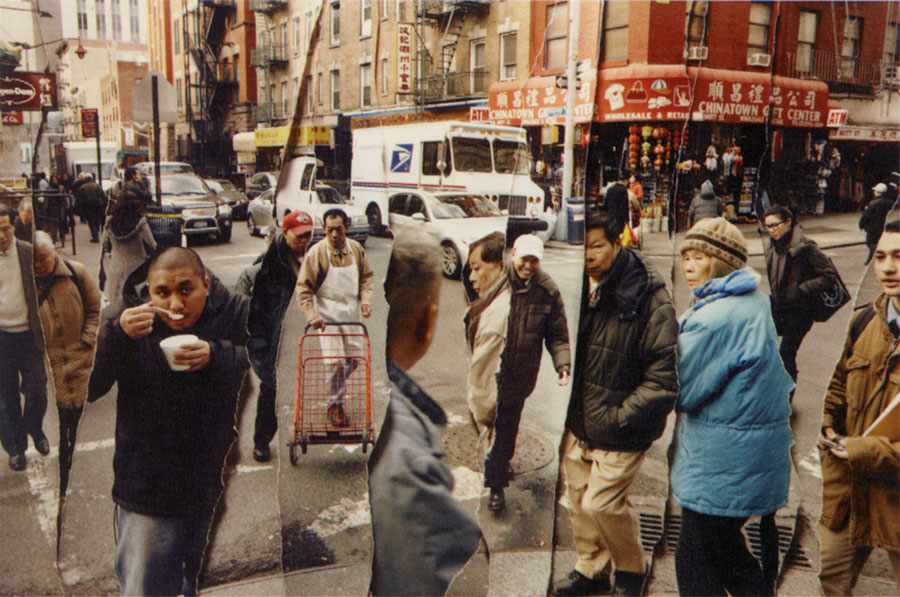Contemporary Photography Singapore
A Survey
Gael Newton
originally published by the TAASA Review (The Journal of The Asian Arts Society of Australia)
Vol 20 No. 4 December 2011
Masters, Manit Sriwanichpoom, 2009, Thailand,
Gelatin silver photographs,
courtesy Valentine Willie Fine Art, Singapore
|
 |
In October 2008 I found colleagues and friends were rather blank about my upcoming two-week holiday in Singapore, two days of which were allocated to participating in the inaugural Singapore International Photography Festival (SIPF). The greater merits of the ancient monuments and exotic street life of India, Thailand or Cambodia, the beauties of Vietnam or pampered boat cruises up the Mekong, were all warmly recommended to me as alternatives.
An invitation had come to me to participate in the SIPF initially via Zhuang Wubin, a young Singaporean documentary photographer, researcher, writer and curator. He wrote on behalf of Festival Director Gwen Lee, director of 2902 Gallery, then the only exclusive photoart gallery in Singapore and the largest in Southeast Asia.
Arriving in Singapore the heat was no surprise; the art of short forays from the hotel soon mastered. Singaporeans seemed equally surprised when my partner and I mentioned we were in town for a fortnight. Yet everything about Singapore's cultural situation was interesting, especially in comparing attitudes and achievements of this small island nation of 5.8 million against my own land approaching 23 million.
A significant number of international curators and photography teachers had come to SIPF unfunded. I merely gave a talk on the Asia-Pacific collection at the NGA and participated in a forum with key figures such as photojournalist Alex Moh from Kuala Lumpur, who is currently working towards a history of photography on Southeast Asia, and Thai photomedia and video artist Manti Sriwanichpoom - one of the greats of Southeast Asian art whose work has been seen in the Asia Pacific Triennial in Brisbane and acquired by the Queensland Art Gallery.
The National Museum of Singapore (NMS) and Singapore Art Museum (SAM) are the peak high arts government bodies. Both have collections of Southeast Asian and select holdings of foreign art. NMS has a cinematheque which can runs programs of past and present forms of the moving image. A range of energetic cooperatives, alternative and government agencies exist, some with a performance arts base. These are the Centre for the Arts and art Museum at the National University of Singapore, the Nanyang Academy of Fine Arts, and Lasalle College of the Arts where the esteemed Australian art historian, contemporary art curator and critic Dr Charles Merewether is Director of the Institute of Contemporary Art.
Coinciding with the SIPF, the National Museum launched its first Season of Photography with Douhleness: Photography of Chang Chien-Chi put together by their curator Wong Hwei Lian in collaboration with Chang, a Taiwanese member of the elite European photoagency, Magnum. The exhibition had a well-produced catalogue published by Didier Millet of Editions Millet, Singapore. The other two shows in the Museum's season were of foreign multimedia artists: Mexican Pedro Meyer and American choreographer composer /scenarist Robert Wilson.
A good account of the evolution of the regional art scene can be found in the SAM catalogue, Negotiating home history and nation: two decades of contemporary art in southeast Asia 1991-2011, in which an essay by Susie Lingham, an artist, co-founder and director of 5th Passage Artists Ltd in Singapore, gives an admirably lucid and detailed account of the history of contemporary art since the late 80s and the impact of the Singapore Government's 'Renaissance City' plan of 2000 which has directed energy from business to the arts. In a recent conversation, however, Charles Merewether disputed the premise behind the concept of 'Southeast Asian art', citing the greater differences between the countries and cultures that make up the region.
The acknowledged dominance of performance and installation art in Singapore referred to by SAM catalogue contributors is borne out in relation to photomedia. While conceptual photoworks by important figures Manit Sriwanichpoom, Sabah-born Malaysian Yee I-Lann and Singaporeans Lee Wen and Amanda Heng, are included, there are no works by photographers making documentary or tableaux /staged imagery as such. International post-modern themes of hybridity and cross-gender appear but representation of the local vibrant Peranakan (Chinese-Malay-Indonesian) culture seems wan.

Orang Besar Series: A Rousing Account of Migration in the Language of the Sea, Yee I Lan, 2010, Ed 2/8 Triptych,
Type-C Colour Photographs, Collection National Gallery Of Australia, © The Artist
Peranakan cultural heritage nurtured over the same period and extending beyond the Straits, has been treated directly by Chris Yap Wooi-Hoe's Of Fingerboivls & Hankies series, a commission from the National University of Singapore shown at their Baba House museum. The Peranakan Museum is a must-visit in the arts quarter of Singapore.
The SIPF acts to provide a depth of engagement with photography's many lives as art and illustration, promotion, witness, propaganda and provocateur. This wider gamut of engagement is also at the core of programs at SIPF Director Gwen Lee's own photoart gallery 2902, named for its start date in a leap year in 2008. It is housed in the Mount Sophia Old School arts studio space though headed for a new city space in the near future.
Lee manages a diverse program which recognises photography as art, craft and business that needs exposure and marketing.
Following the program of exhibitions through the Gallery's website introduces a strong core of local artists as well as adventurous choices of pan Asian and foreign artists. These include award winning John Clang (Ang Choon Leng) who also works out of New York. Clang studied at the Lasalle College of the Arts and had his first gallery shows with 2902 and SAM in 2009.

The Illegitimate Cross-Dressing Son, Two Princesses and The Royal Cook, Chris Yap, 2009
From the five Tableaux on the Changing Lives of a Peranakan Family over three generations, Colour giclee print,
© The Artist and The National University Museum, Singapore
Dealer galleries are not over abundant in Singapore and few support photomedia to any large degree. Kuala Lumpur and Singapore based Valentine Willie Fine Art (VWFA) was founded in 1996 by lawyer and collector Valentine Willie and Asian art specialist Mee-Seen Loong as a gallery venue and force for appreciation of modern and contemporary Southeast Asian art. It shows several photomedia artists: Manit Sriwanichpoom and Yee I-Lann, video artist Emil Goh and performance artist Melati Suryodarmo.
Singaporean and Southeast Asian photographers, photocurators and photohistorians are often found working simultaneously across commercial, reportage and art projects destined for local and international museums, commercial galleries and Festival venues. Art School courses are well established and, while photohistory is not a discipline, photographer-lecturers like Lasalle's Gilles Massot offer course content, while Chris
Yap combines professional and personal work as a photographer and educator at his Light Editions print workshop and gallery, started in 2002. Yap has added historical shows to his program most recently work by his Pictorialist uncle TM Chau, acquired by the Singapore Museum and the National Gallery of Australia.
A different point of view from those artists bridging professional, commercial and contemporary staged photography as a necessity in Singapore is taken by Zhuang Wubin, a third generation Chinese Singaporean whose website zhuangwubin.posterous.com contains his extensive work on Chinese communities in Southeast Asia and personal commitment to a research based documentary photography.
Many local photomedia artists have been educated at art schools at home and abroad and are based between EuroAmerica and their homeland. This is increasingly an international trend where once permanent exile was the only real career option.
Historical photographs which are outside the scope of this article, are served in Singapore by a permanent display in the National Museum and by a few high and low end antique dealers across Singapore (prices are however, at international levels). A number of private collectors, European and local, hold world-class Asian collections and quietly continue to build their collections. What is lacking is ready access to classic international historic photographers' works that have formed much of the history of the medium, at least as written in Western photohistories, or even the regional works of famed 19th and 20th century foreign photographers at work in Asia, such as Felice Beato and John Thomson, whose career started in Singapore.

On The Eve Of The Chinese New Year, Zhuang Wubin, 2008,
A Young Visitor To Chinatown Is Seen Hugging A Mannequin That Has Been Put Up For The Festival
Type C Colour Photograph, Courtesy The Artist and The Chinese Heritage Centre
My own photographic interests are broad church to eccentric. I found all fronts were catered for in Singapore's photomedia venues and antique dealers. I left a fortnight later as a fan of Singapore city and its astute infrastructure development in the face of some mighty economic and political challenges, with its sophisticated arts community feeling its way under a new and more supportive government arts policy. I have returned since on three more visits. My initial response was a heightened sense of the robustness of art making - artists do not need a forty page manual to 'get' a new idea, even one from overseas - but also a recognition that art writing can fall behind.
As I walked around the galleries and observed the extraordinary transformation of a city even to its Disneyesque Sentosa Island resort and new Marina Bay casino mall, I was aware that the other viewers were largely Asians - most likely bi if not tri-lingual, balancing living tradition and high tech futures, versed in Eastern and Western culture, familiar with Buddhist and Muslim religious traditions as well as local Indigenous animist beliefs. I could not hope to share this rich mix of background and experience, yet the texts I read were all couched in such familiar language and concepts, word perfect for London or New York or Australia, that this raises the question: how can this material reflect the very different perspectives that informed the making of the art it describes?
Valentine Willie's 'An introduction to South East Asian Art' on the VWFA website meets the claim that Asia is too diverse and inchoate to encapsulate meaningfully by affirming that: "...the cultural and civilisational brilliance of the region (and the rationale of much Southeast Asian contemporary art) lies in the way its people have been able to make the foreign and the alien familiar - shaping, for example, a localised Nusantara response to the great global faiths". The Masters degree in contemporary Asian art now offered at Lasalle College will perhaps produce new generations of writers able to send melded culture messages in bottles back to sea to reach foreign shores.
Gael Newton, Senior Curator of Photography, National Gallery of Australia. December 2011

Time (Chinatown), John Clang, 2009, fine art archival print. Courtesy of the artist
Links:
The TAASA Review - online
Gallery 2902, Singapore
Singapore International Photography Festival (SIPF)
more Essays and Articles
|